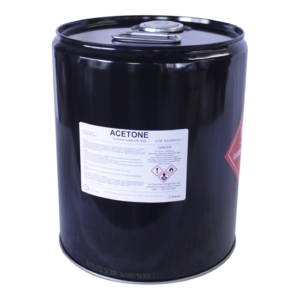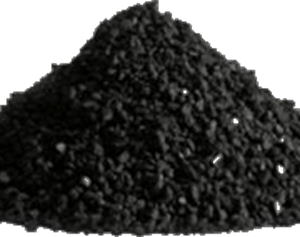Description
Glycerol 99%
From Wikipedia, the free encyclopedia
Glycerol is a chemical compound with the formula HOCH2CH(OH)CH2OH. This colorless, odorless, viscous liquid is widely used in pharmaceutical formulations. With many names (see Table), it is a sugar alcohol and fittingly is sweet-tasting and of low toxicity. Glycerol has three hydrophilic alcoholic hydroxyl groups that are responsible for its solubility in water and its hygroscopic nature. Its surface tension is 64.00 mN/m at 20 °C and it has a temperature coefficient of -0.0598 mN/(m K). It is a central component of lipids.
Synthesis
Since glycerol forms the backbone of triglycerides, it is produced on saponification or transesterification. Soap making and biodiesel production are examples of the former and latter. Until recently, synthetic glycerol was mainly manufactured at an industrial scale from epichlorohydrin though this process is no longer economical. Glycerol is a 10% by-product of biodiesel manufacture (via the transesterification of vegetable oils). This has led to a glut of crude glycerol on the market. Although this crude glycerol (typically containing 20% water and residual esterification catalyst) can be refined to a purified form, a great deal of research is being conducted to try to make value-added molecules from glycerol, as an alternative to incineration. One such programme to add value to this glut of glycerol is the UK-based initiative The Glycerol Challenge. Some potential uses for glycerol include the following:
Hydrogen gas production
Glycerine acetate (potential fuel additive)
Compost additive
Citric acid production
Conversion to propylene glycol
conversion to acrolein
Applications
Polyether polyols
One of the major raw materials for the manufacture of polyols for flexible foams, and to a lesser extent rigid polyurethane foams Glycerol is the initiator to which propylene oxide/ethylene oxide is added
Alkyd resins (plastics) and cellophane
Used in surface coatings and paints
Used as a softener and plasticizer to impart flexibility, pliability and toughness
Absolute alcohol
- There is an absolute alcohol production process by dehydration using glycerol.
Other applications
- Manufacture of paper as a plasticizer, Nitroglycerin, humectant and lubricant. Nitroglycerin is an essential ingredient of smokeless gunpowder and various munitions. Reliance on soap making to supply co-product glycerine made it difficult to increase production to meet wartime demand. Hence, synthetic glycerin processes were national defense priorities in the days leading up to World War II.
- Used in lubricating, sizing and softening of yarn and fabric
- Used in de-/anti-icing fluids, as in vitrification of blood cells for storage in liquid nitrogen
- Patent applications have been filed for detergent softeners and surfactants based on glycerol (i.e., alkyl glyceryl ethers) instead of quaternary ammonium compounds.
- A way to preserve leaves is to submerge them in a solution of glycerol and water.Use a mixture of one part glycerol to two parts water. Place the mixture in a flat pan, and totally submerge the leaves in a single layer in the liquid. You’ll have to weigh them down to keep them submerged. In two to six days, they should have absorbed the liquid and be soft and pliable. Remove them from the pan and wipe off all the liquid with a soft cloth. Done correctly, the leaves will remain soft and pliable indefinitely.Often used in the preparation of lichen for use in model scenery and dioramas
- Can be added to solutions of water and soap to increase that solution’s ability to generate soap bubbles that will last a long time.
- Used as an antifreeze or a cryoprotectant in cryogenic process.
- Used in fog machine fluids
- Counteracts phenol burns
- Now that biodiesel production likely will produce large quantities of co-product glycerine (about 0.1 lb of glycerine per lb of biodiesel), processes are being announced to manufacture propylene glycol and epichlorohydrin, traditionally propylene derivatives, from glycerine.
- Produced as a co-product in bio-diesel synthesis
- Used to preserve bacteria at -80 (prevents lysing of cells).
- Used to increase the density of samples in gel electrophoresis, making them settle in the wells more efficiently.
- Used in PCR as an additive. It decreases the dielectric constant of the mixture, which will weaken hydrogen bonds in the double-stranded DNA and lower the annealing temperature.
- When mixed with potassium permanganate, iron oxide, and aluminum, it produces a thermite reaction.
- Used in the conservation of waterlogged organic objects (such as leather and wood) to stabilise before freeze-drying treatment.
Danger of contamination with diethylene glycol
On May 4, 2007, the US Food and Drug Administration advised all US makers of medicines to test all batches of glycerine for the toxic diethylene glycol.[7] This follows an occurrence of 100 fatal poisonings in Panama resulting from a Chinese factory deliberately falsifying records in order to export the cheaper diethylene glycol as the more expensive glycerol.[8] Glycerine and diethylene glycol are similar in appearance, smell, and taste. The US Federal Food, Drug, and Cosmetic Act was passed following the 1937 “Elixir Sulfanilamide” incident of poisoning caused by diethylene glycol contamination of medicine






